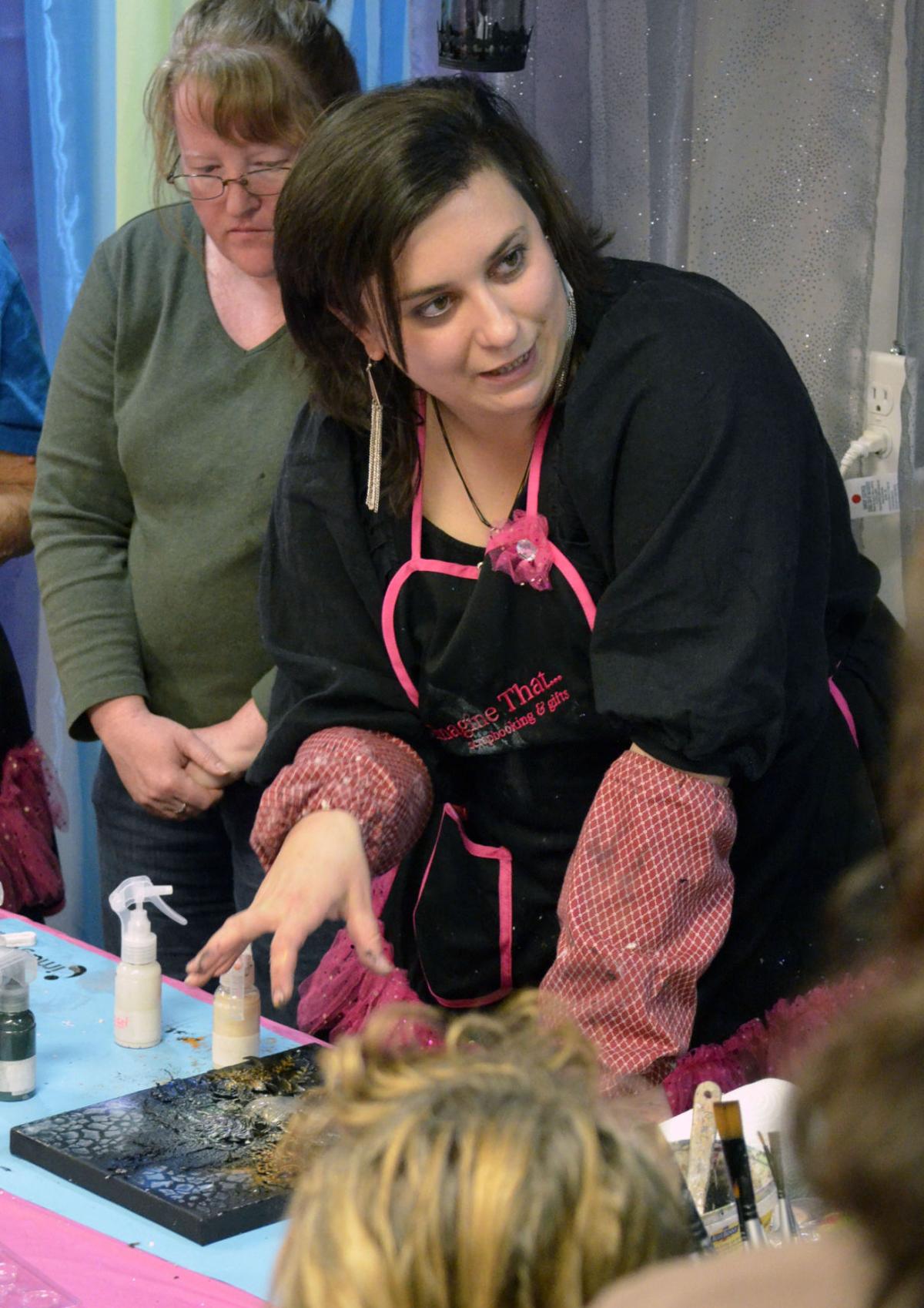I thought I would try this with a tree image I have been working on, and use free-motion stitching instead of hand embroidery. Here you can see the different components. I have a painted canvas for the background. The leaf canopy and tree were fabrics I painted in a Jason Pollen workshop a few weeks ago. The interfacing layer is a gelli print I made a while ago. I used fusible web to iron down the yellow tree canopy fabric. I won't iron down the tree trunk until I have finished with the interfacing layer.
When I put the interfacing over the yellow fabric, I am pretty sad that my painted fabric is pretty much hidden. Next time I would probably just grab a fabric from my stash and not use something I hand painted. I then took this "sandwich" to my sewing machine and free-motion stitched on it.
What I learned as I went along:
- The interfacing melts a lot better if the free-motion stitching is fairly open. Tight stitching really prevents it from melting.
- If I cut slits in the interfacing where I want it to melt away, it does help. I just used a seam ripper. I wanted to make sure it melted where I have sky openings in the tree canopy.
- Sew right along the outside edge if you don't want the background fabric visible around all the edges.
- Use lightweight interfacing. The heavy stuff does not like to melt and is some places the edges looked light brown/slightly toasted.
As you can see I played tree trunk swap and decided to use this magenta/purple one instead of the red one shown in the previous picture, since the gelli-printed interfacing had a touch of purple.
And here are a bunch more. This one has the heavy interfacing.
I did free-motion stitch around the trees and branches after I ironed the tree trucks down. I really like the following two where I used colorful thread for this, instead of dark gray.
This one was the first one I stitched the interfacing on. I did the stitching very close together, so the interfacing did not melt much.
I love how they turned out, although there were a lot of steps and work involved. I did use my Scan'n'cut to cut the tree canopies, but hand cut the tree trunks. These are roughly 8" x 10". I think I will work on a larger one next!



















